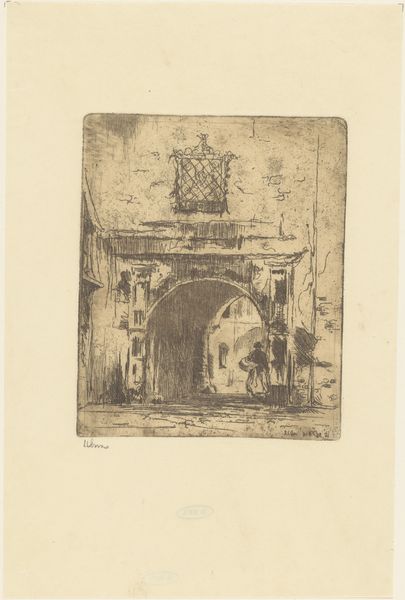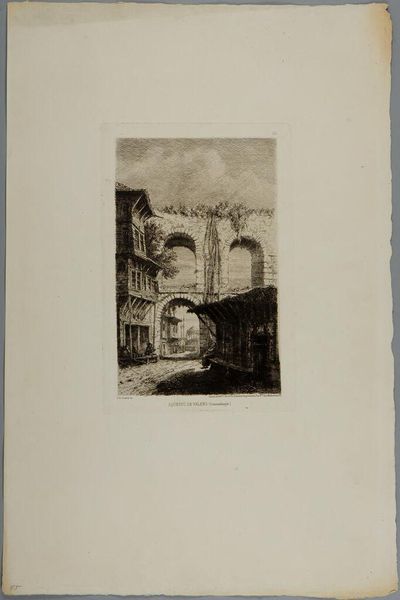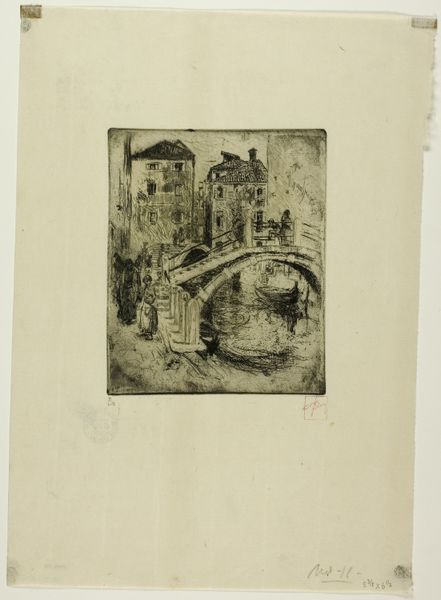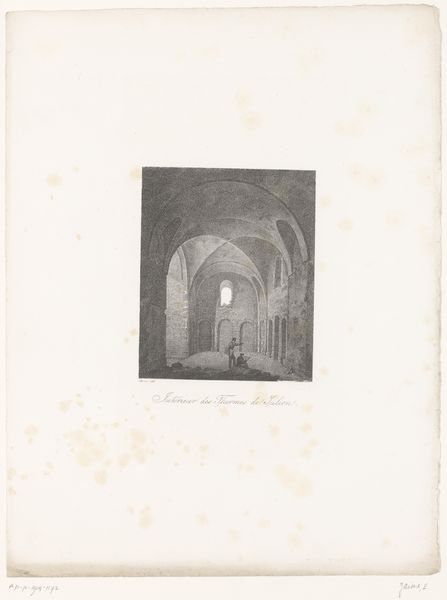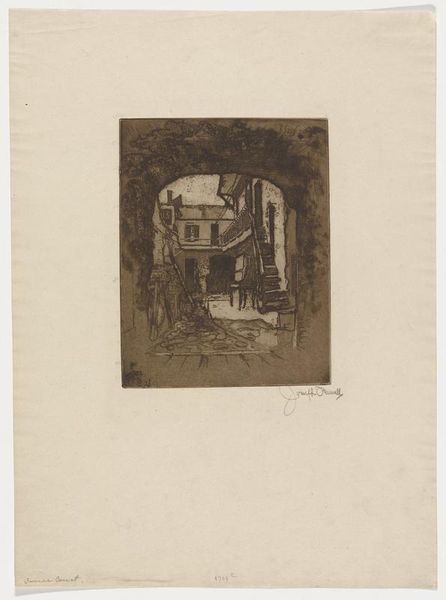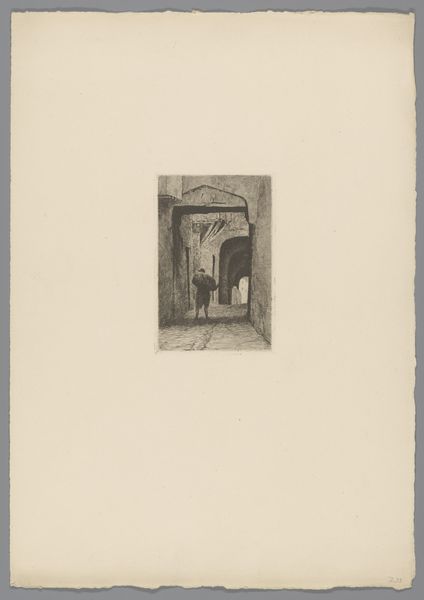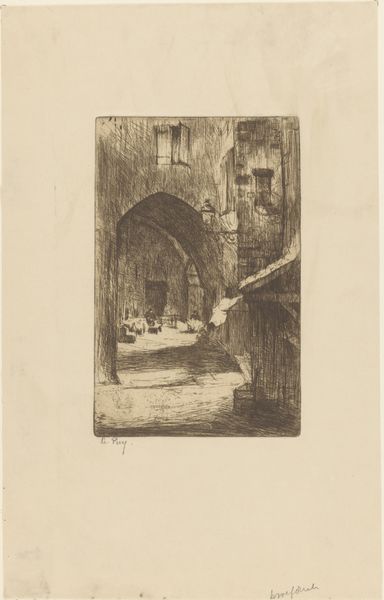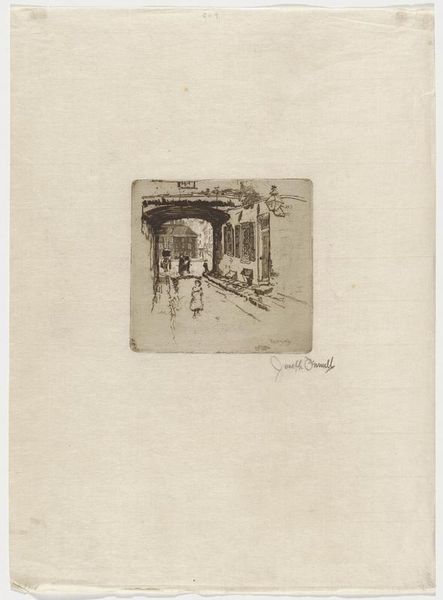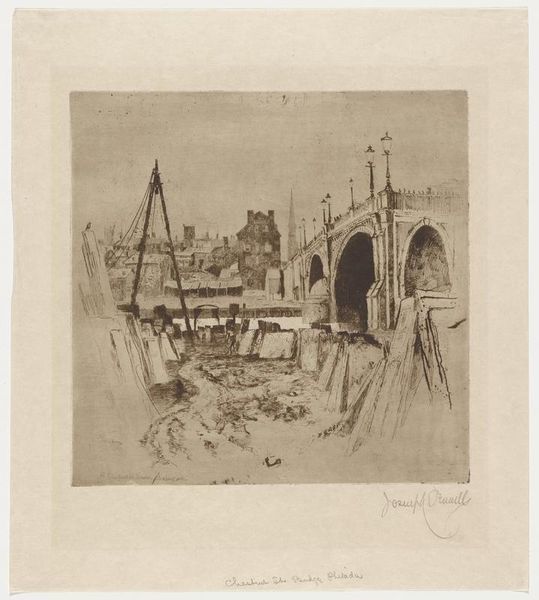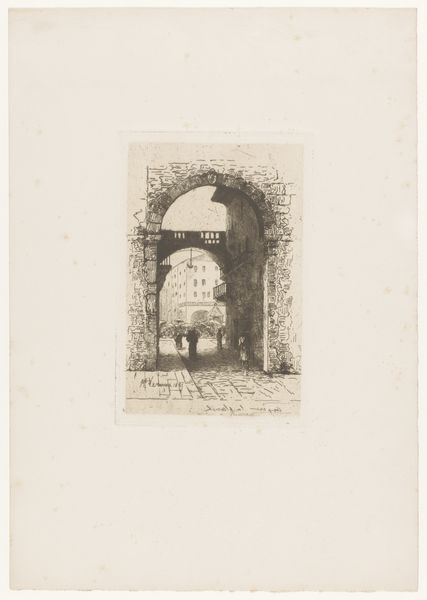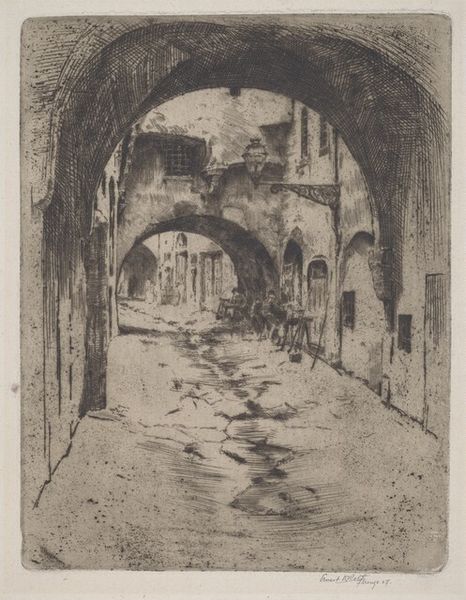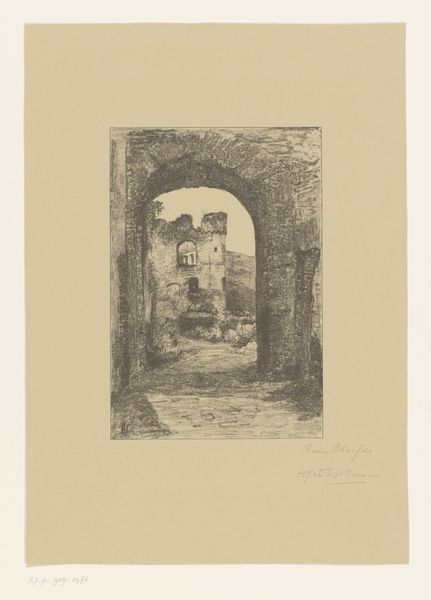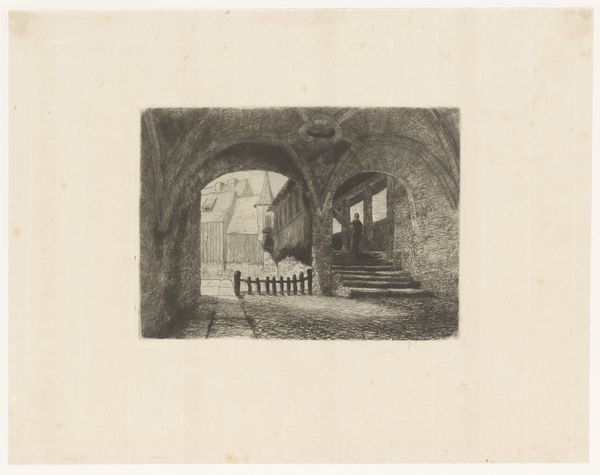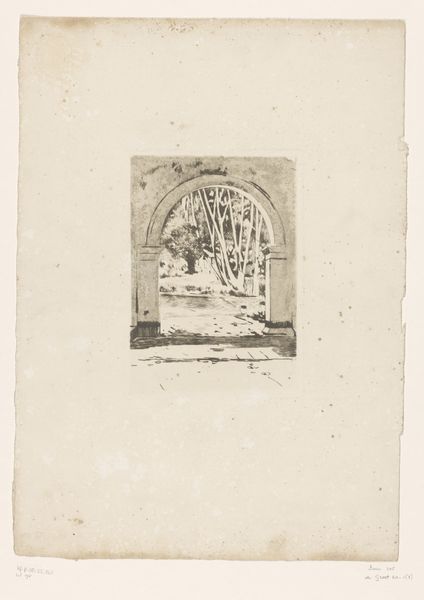
print, etching
# print
#
impressionism
#
etching
#
landscape
#
cityscape
Dimensions: 10 x 7 in. (25.4 x 17.78 cm) (plate)17 3/8 x 13 7/16 in. (44.13 x 34.13 cm) (sheet)
Copyright: No Copyright - United States
Curator: Joseph Pennell created this etching, "Covered Street," in 1883. It's a stunning cityscape example of the Impressionist style, currently housed here at the Minneapolis Institute of Art. Editor: Oh, wow! My immediate thought? Intimacy. I feel like I’m peeking into someone’s secret, sun-drenched afternoon. It's scratchy and unfinished in a good way. It feels… honest. Curator: That feeling of intimacy stems, I think, from Pennell's interest in portraying modern urban life in Europe, choosing these lesser-known streets rather than monumental buildings. There’s an informality that defies academic traditions. Editor: It does, and there is almost this feeling that the structure protects what it covers like it knows it will never last for an extended period of time. It has that fragile quality that only adds to its beauty. How was etching used at the time? Curator: Etching offered artists like Pennell a readily available and easily portable medium, suitable for the era's rapid social changes and increased urban sprawl. Its rise was facilitated by commercial printmaking and its connection to journalism and book illustration. Editor: Yes! It does feel very documentary in nature. Look at how he's captured that sunlight hitting the road. It dances, doesn’t it? It feels so temporal that its only purpose it to capture the exact feeling and tone that the moment exudes. Curator: The sketchy lines evoke an instantaneous moment. Pennell, of course, was deeply influenced by Whistler and, more broadly, the aesthetic movement, prioritizing sensory experience and artistic autonomy. "Art for art's sake," they declared! Editor: Totally! It looks as if he made every stroke purposeful and then took a quick picture as a reference later on in the studio. You can almost smell the dust and the heat rising from the cobbles. Makes me want to book a flight. Curator: It makes me consider the art world, then versus now: its players and purposes, the ever-changing meaning of representation. The impression it gives is always impacted by how its social and cultural milieu impacted what art was trying to represent. Editor: Well said! I think its honesty of vision and the almost offhanded feel is just as moving as any massive landscape or dramatic portrait. Small wonder it captures the eye!
Comments
No comments
Be the first to comment and join the conversation on the ultimate creative platform.
